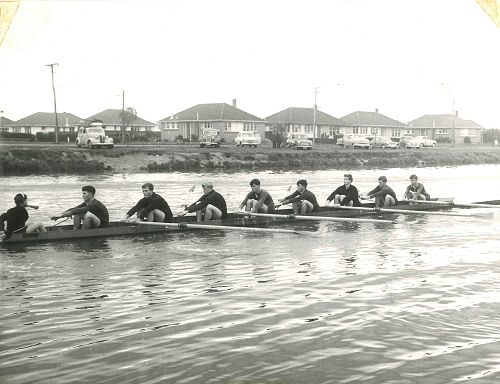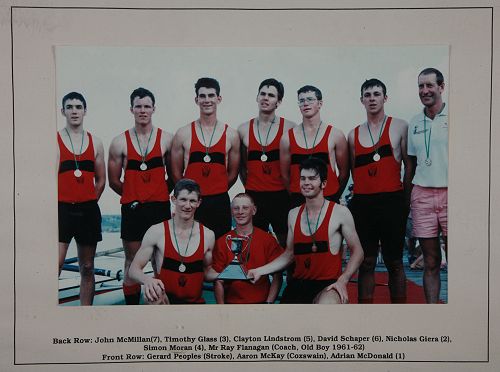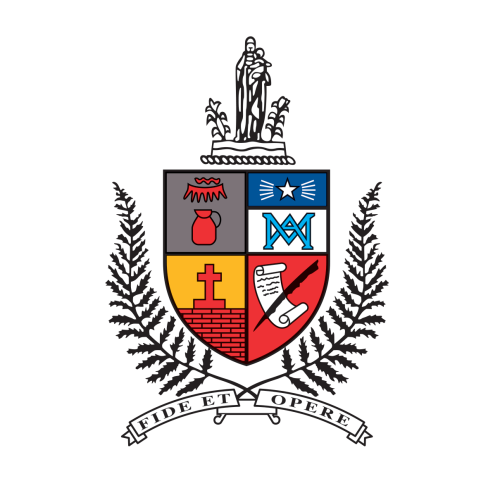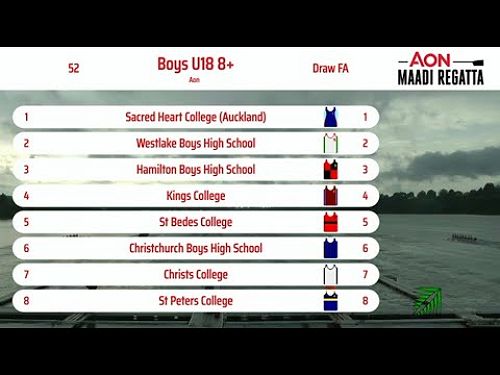
Reflections: A history of rowing
In honour of the success of our rowing crew at the recent Maadi Cup, here is a look back at the evolution of rowing at St Bede’s.
St Bede’s has had many successful rowing squads over the years with some Old Boys even going on to compete for New Zealand at the Olympic Level. Rowing at St Bede’s was a success from the start when in March 1956 Peter Perano and John Wylie won the secondary schools double sculls at the inter-school regatta held at Kerr’s Reach. The win caused a surge of enthusiasm amongst Bedean’s with an eight, fours, double sculls, and two single sculls crews competing at the Inter-schools race the following November.
In the early days, the school borrowed boats and other rowing equipment from the Avon Rowing Club due to the cost of purchasing their own. In 1960 the sport was restricted to day boys only meaning boarders weren’t eligible to compete. As the sport grew in popularity boys had to be turned away as there were not enough boats to accommodate all the boys who wanted to compete. It must be noted that not everyone was as supportive from the start. For those in charge of other sports such as athletics and rugby the shoulder taping of boys to join the rowing squad posed a threat to losing their own promising athletes. Early rower and coach Murray Giera summed up some of the early attitudes to rowing by saying:
“It was considered elitist – the sort of thing Christ’s College always put high store by but some at St Bede’s thought we should not give it that status. There was a feeling rowing took a lot of money and the boys out of the classroom and, especially, other sports. When I was in charge I used to organise study periods when we were training away from home. I used to emphasise to the boys the first sign of them falling behind in their classes and we would be in trouble. Same with the money. We got great support from the old boys – I want to emphasise that – but we raised a lot of the money ourselves, and it was an awful lot of money when it came to new boats and traveling expenses. It was a big task but we had enough supporters who were keen.”
In 1964, hopes that St Bede's might be able to produce a winning Eight were not high at the beginning of the season. However, a well-coordinated training schedule saw the crew row 170 miles and carry out a number of strenuous ergometer tests in the lead-up to the Christchurch Inter-Secondary Schools' Regatta at Kerr's Reach. The Head-of-the-River title was to be decided before a large crowd containing its share of St Bede's supporters who no doubt helped propel the crew to a famous victory. The Christchurch Press reported at the time that "good, sustained and tenacious rowing gave St Bede's College a well-deserved win" over rivals Christchurch Boys' High School and Christ's College. David Lindstrom (1962-1966) stroked the crew and Michael McNab (1963-1966) the coxswain helped lead the Eights to a winning time of 5mins 9.8 seconds, one of the fastest times for the mile race recorded on Kerr's Reach.

Following this success in 1964, the rowing boys fundraised to purchase a set of oars with a target of £100 at the end of 1965 the new oars had arrived from England and were painted red and black in the St Bede’s Colours. In 1965 enough funds were raised to purchase a new College Eight boat which was blessed and named Bede by the Rector. Parents and Old Boys Associations jointly contributed £500 of the £600 needed to purchase the boat.
The arrival of the new boat coincided with St Bede’s first entry into Maadi Cup. Maadi Cup, while often used to refer to the regatta as a whole, specifically refers to the prize awarded to the winners of the New Zealand Secondary Schools Boys' Under 18 Rowing Eights. In 1965 the competition was held in Wellington with the racing taking place on the harbour. Battling the southerly winds St Bede’s finished second in the heat, a length behind Christ’s College, qualifying for the final. Wanganui took out 1st place that year with St Bede’s coming in a respectable fourth place behind Christ’s College and Tauranga, who placed second and third respectively. In the years to follow St Bede’s would have many successful crews, with placings of 3rd in 1975 and 2nd in 1976 but it wasn’t until 1991 that St Bede’s first won Maadi Cup.
The 1991 season started off well. With a new fibreglass Bede, the team was able to beat rivals Christ’s College in the Head of the River San Agata Cup in the two weeks leading up to Maadi. Unfortunately, the eights were beaten in their heat by Westlake Boys’ High School and despite posting the second fastest time of the day they had to survive the repêchage to make the final. Both the U17 and U19 fours who had been strong hopefuls had not been successful. The eights started their final pulling into an early lead, they were half a length clear at the 500m mark and nearly a full length at the 1000m mark. They managed to secure the win beating Westlake Boys by a third of a length.
The winning regatta squad included Anthony Collie, Stephen Locke, Gilbert Robertson, Harvey Tyler, John O’Dea, John McMillian, Nick Giera, Clayton Lindstrom, David Schaper, Aaron McKay, Timothy Glass, Gerard Peoples, Adrian McDonald, Simon Moran, Rhys Galloway. They were supported by Mr. Russell Stocks and Fr K. Conroy and coached by Old Boy Ray Flanagan and father-son coaching duo David and Ted Lindstrom.
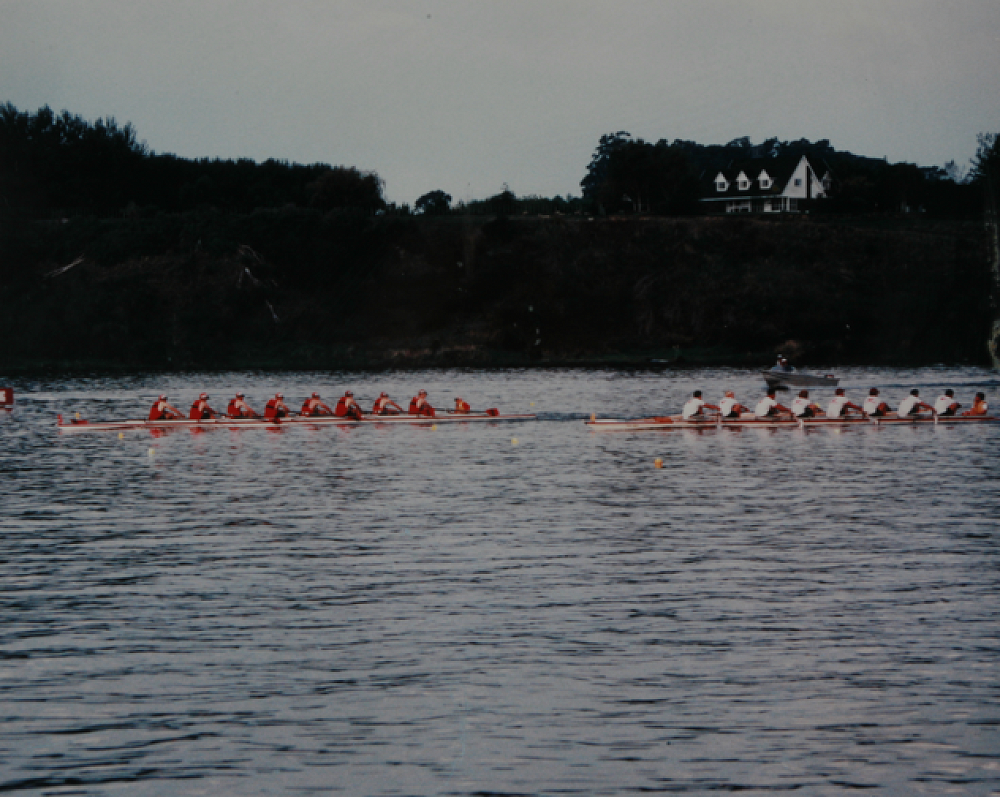
For 31 years St Bede’s rowers have tried to reclaim the title at Maadi coming close in 2014 with second place. A full rundown on the 2023 regatta is included elsewhere in the newsletter but the race will no doubt be one for the history books. If you watch the video of the race included you will have seen how close the final race was with St Bede’s winning by just 0.06 seconds scrapping ahead of Hamilton Boys High and setting a new record at 5 minutes 42.17 seconds. Not only did St Bede’s take home the Maadi Cup but also achieved a clean sweep in the under-18 grade winning the Springbok Shield awarded for the coxed four final (the first time St Bede’s has won this event) and also taking home first place in the pair.
THE OARSMAN’S SONG
The willowy sway of the hands away
And the water boiling aft,
The elastic spring and the steely fling
That drives the flying craft.
The steely spring and the musical ring
Of the blade with the biting grip,
And the stretching draw of the bending oar
That rounds the turn with a whip.
And the lazy float that runs the boat,
And makes the swing quite true,
And gives that rest that the oarsman blest
As he drives the blade right through.
All through the swing he hears the boat sing
As she glides on her flying track,
And he gathers aft to strike the craft
With a ringing bell-note crack.
From stretcher to oar with drive and draw,
He speeds the boat along.
All whalebone and steel and willowy feel –
That is the oarsman’s song.
- Steve Fairbairn
Gallery

